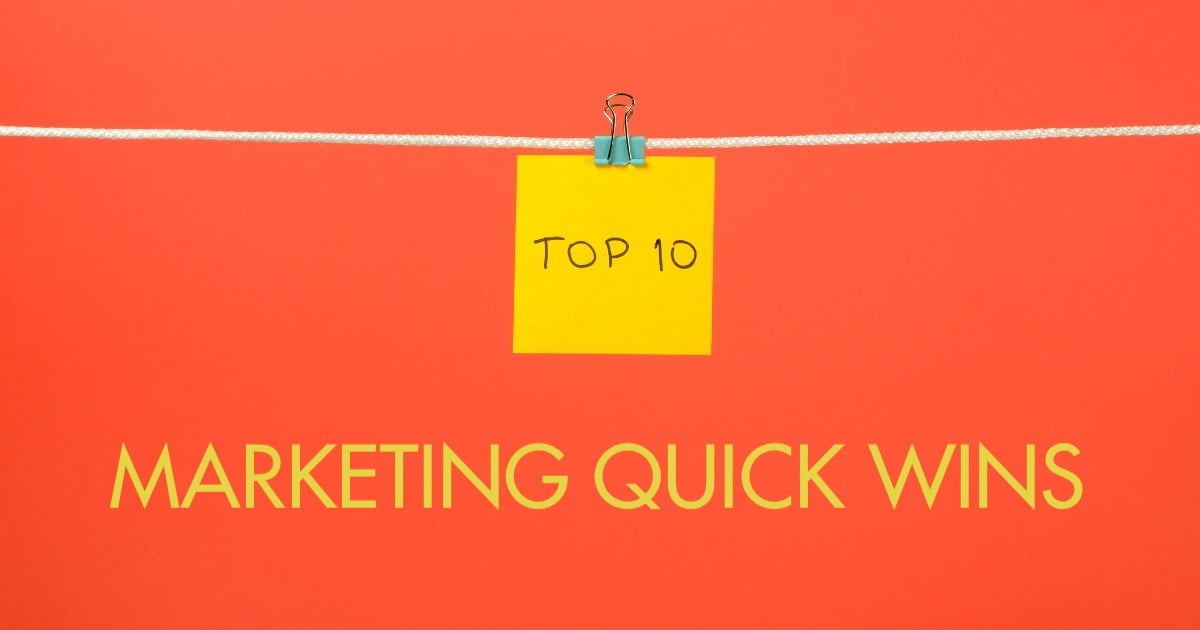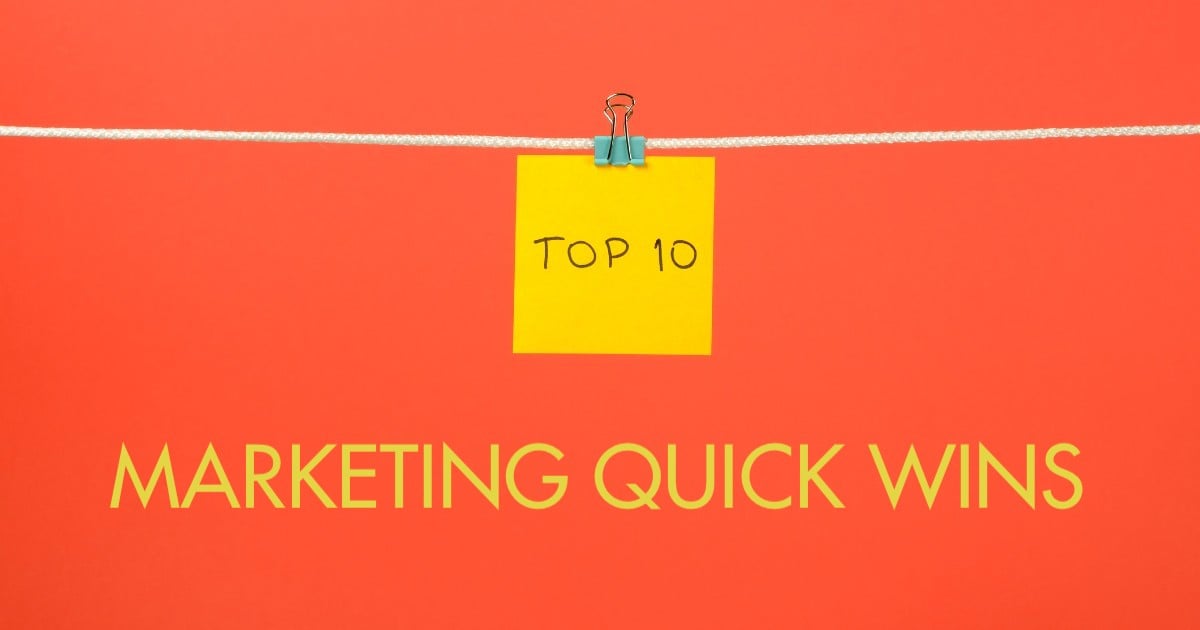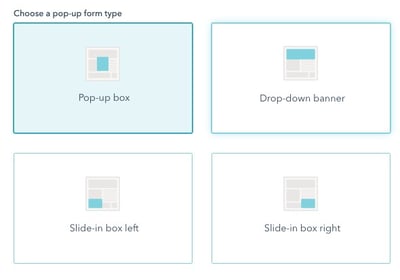



It’s exciting to plan large marketing initiatives. New website? Sure! Rebranding effort? Absolutely. Launching a new product? Let’s do it!
While these big campaigns can take months and, sometimes, years to fully implement, marketers know they still need to attract highly qualified leads today. While larger marketing campaigns and implementing overarching strategies are important, they are often fueled by quick bursts of collective energy channelled into smaller efforts. In other words, you need both long-term strategy and to capitalize on quick wins to produce the greatest marketing ROI.
Here’s a collection of our top 10 marketing quick wins to help boost lead generation and refresh your inbound efforts.
Perhaps you’ve developed an eBook, white paper, or checklist that continues to have a high number of views or downloads. If the content truly is of value, then visitors won’t mind exchanging a bit of their personal information for it. Develop landing pages for your most popular content along with a contact form to help you capture those leads.
Gated content isn’t just reserved for eBooks and checklists. Consider other items such as webinars, events, contests, and more. HubSpot has a great list of 20 types of content that should have their own landing pages. Check it out!
I know, I know, it's counterintuitive to what I just said. But there are times when it's appropriate to ungate certain content marketing pieces. An example might be case studies. We find a lot of people have their case studies gated, but it’s our opinion that when your customers experience success as a result of your product or service, let the world know.
Another consideration is partially ungating some content if you’re not getting as many submissions as you’d like. Provide a portion of an eBook or white paper to give visitors a taste of its value and ask for their contact information to get the full experience. You can also repurpose long-form content into pillar page content to boost its SEO power. We did this on our own website with one of our top eBooks and included the information on a pillar page with a companion Annual Marketing Plan Template download. It’s outperformed the old landing page by far with more views and lead conversions.
One of the easiest and potentially most rewarding marketing quick wins is optimizing your existing website. We’ve all ended up on websites with broken links, errors, or annoying glitches and, chances are, we hit the back button to return to Google. Fixing these issues on your own website will improve SEO and your users’ experiences.
Prioritize your web pages using various online tools that can pinpoint the issues. Start with the highest value and most visited pages and tackle a set number each day so you feel a sense of accomplishment. Address the following common issues:
In addition, make sure all information is current. You’d be surprised how many company contact pages link to email addresses that are no longer valid.
Let’s face it; creating valuable content takes time and resources. There are some types of content, however, that can get quick results with relatively little effort. Here are a few examples:
Not every eBook needs to cover a topic in-depth. Sometimes a simple “Introduction to ABC” or “Steps to Implementing XYZ” can serve as valuable content, especially for top of the funnel prospects. A quick interview with a subject matter expert can get you the content you need and lead to other ideas. And don’t forget checklists. Chances are, you have one or more that are used for your business — an installation or maintenance checklist, for example. Adapt it as a resource for prospects and customers.
Most industries have a plethora of insider terms, definitions, and acronyms. Providing a resource for potential customers can help bridge an unintentional language barrier. Create a glossary to educate customers.
Have a high-performing blog? Take that “Top 10” list and turn it into a gated tip sheet or infographic. Take a look at that high-performing email campaign and rewrite it into a blog post. Convert your PowerPoint or Keynote presentation into an eBook, or adapt a sell sheet to serve as a “Benefits of XYZ” guide. The possibilities are endless.
Looking for more easy content ideas? Check out our How-To Guide to Repurposing Content.
Through the years, your website has evolved and grown with your business — at least, that’s the hope. It’s likely that there’s content on your website that’s no longer relevant, or even duplicate content. Still showing a job opening that’s been filled for three months? Featuring a product that’s been altered or discontinued?
Consider removing unused or duplicate content. First, however, check the analytics. If the page performed relatively well, you’ll want to retain that link equity. If you simply delete the page, visitors will receive the dreaded 404 error. Instead, use a 301 redirect to point users to a new page that contains related and relevant content. Doing so also helps show search engines that your site is up-to-date.
Another website quick win is to refresh your menu items. Simply rearranging your navigation menu so that the most important items appear first can improve the user experience and keep them on your site longer (which also helps with SEO).
RELATED: How to Improve Website Bounce Rate and Average Time on Page
Run a report of contacts that haven’t engaged with you or your website in some time and reintroduce yourself. A simple “haven’t heard from you in a while” or “thought you might be interested in this” email can open doors and nurture leads that have gone cold.
Include a short list of high-performing new blog content along with one general gated piece to pique interest. Track click-through rates to see which links perform best. Reengaging even one prospect could lead to an opportunity and be well worth the effort.

The term “pop-up” may not give most of us the fuzziest of feelings, but hear me out. Strategically placed pop-up forms can have a big impact on your conversion rates. If you’re using HubSpot, you know that their form building tool has two options: regular and pop-up. In HubSpot, pop-up forms can take shape in a few different ways, including a true pop-up, drop-down banner, or slide-in boxes.
Consider setting up a drop-down banner on your blog posts that urge visitors to subscribe to your blog if they like what they’ve read, or implementing an exit-intent pop-up banner to urge visitors to take another action. For example, ask if they want a PDF of what they just viewed before leaving the page. To see this in action, check out our What is Inbound Marketing for Industrials pillar page.
Add a simple call to action (CTA) form in a prominent location, such as your home page. Rather than requiring the full gamut of personal information, include a top-of-the-funnel offer that simply requires a first name and email to encourage more visitors to hit the “submit” button. Since the home page of a website is generally the most visited, having a featured content piece that catches a visitor’s eye before exploring your site can guide them to the information you want them to see most.
You can take this idea a step further, too, by using smart content. This allows you to feature different content pieces based on list segmentation (by industry, for example), or you can choose to display a different piece of content for visitors who’ve already converted on the first piece of content they found there.
Example Top of funnel CTA on a website home page
There’s more noise online than ever, and a well-thought-out pay-per-click strategy can really help supplement an inbound marketing plan. Consider implementing PPC to help raise awareness for a target audience you’re trying to get in front of on Google or social media channels, or to drive visits to one of your new products, services, or other important announcements you’d like to get more eyes on.
Using chatbots and live chat on specific website pages has become a staple for many B2B websites. The chat experience makes it easy (and less daunting) for a visitor to engage in a simple conversation without feeling the pressure of having to talk with a real person.
You can set up a simple chatbot using HubSpot Conversation’s Chatflow tool that allows you to ask your visitors simple questions to help qualify them and direct them to relevant information across your site.
There you have it! Implement any or all of these 10 ideas to see quick results and your inbound efforts multiply. Remember that small steps can accumulate into big impact.
This article was originally published in 2018 and has since been updated for current information and comprehensiveness.
